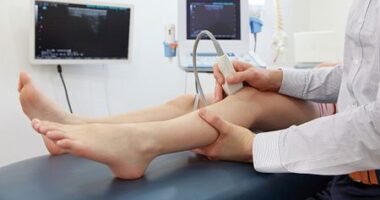Older Adults With Sensory Nerve Problems May Not Have CMT

Older adults suspected of having Charcot-Marie-Tooth (CMT) disease, particularly those over age 60 with sensory nerve issues like numb hands or feet, may actually have hereditary transthyretin (ATTRv) amyloidosis, a Japanese study suggests.
According to its researchers, these patients should undergo genetic testing for mutations in the TTR gene, the cause of ATTRv amyloidosis.
The study, “Elderly patients with suspected Charcot-Marie-Tooth disease should be tested for the TTR gene for effective treatment,” was published in the Journal of Human Genetics.
ATTRv amyloidosis is a group of conditions that includes familial amyloid polyneuropathy (FAP). Mutations in the TTR gene lead to the accumulation of misfolded (abnormal) transthyretin protein in multiple tissues, interfering with their function.
Common symptoms include burning or prickling sensation in the feet and hands, as well as gastrointestinal and urinary problems. The variable manifestations of this disorder at its onset often lead to misdiagnosis as CMT and other disorders. In addition, a previous report has described two patients with suspected CMT who had mutations in TTR.
A team led by researchers at the Kagoshima University evaluated a group of 2,133 Japanese patients suspected of having CMT. Notably, FAP is often reported in specific regions of Japan.
Of these 2,133 people, 10 from unrelated families were diagnosed with ATTRv amyloidosis after undergoing a genetic analysis. Four of them had a family history of the neurological disease.
The scientists compared the 10 patients with ATTRv amyloidosis to the 489 patients known to have CMT.
Neurological symptoms first appeared at a median age of 69 (range 64.2 to 70) in those with ATTRv amyloidosis, significantly later than among CMT patients, whose first symptoms were at a median age of 12, range 5 to 37.2 years.
In seven of these ATTRv amyloidosis patients (70%), the initial symptoms affected sensory nerves, compared with 7.1% in the CMT group. Five of these ATTRv amyloidosis patients experienced numbness of the hands, feet, or extremities, and all had pain in the legs and a burning or tingling sensation in the feet.
No differences were seen between the two groups in arm or leg strength, as measured by the CMT neuropathy score.
Symptoms affecting the autonomic nervous system — responsible for regulating involuntary processes, such as heart rate and blood pressure — were detected in 30% of ATTRv amyloidosis and 21.4% of CMT patients. Symptoms in those with CMT included urinary problems, constipation, bladder dysfunction, orthostatic hypotension (a form of low blood pressure that happens when a person stands up from sitting or lying down), and abnormalities in the eye’s pupil.
Half of those with ATTRv amyloidosis had a history of suspected chronic inflammatory demyelinating polyneuropathy (CIDP), compared with 8.7% of those with CMT. CIDP, a neurological disorder, is characterized by progressive weakness and impaired sensory function in the legs and arms due to damage to the myelin sheath, the fatty substance that wraps around and protects nerve fibers.
No differences were seen between both groups in motor nerve conduction velocity and in the protein content of the cerebrospinal fluid (the fluid surrounding the brain and spinal cord). Of note, nerve conduction velocity studies measure how fast an electrical impulse moves through nerves.
Five of the patients with ATTRv amyloidosis, all able to begin treatment among the 10 identified, were alive at the study’s conclusion.
“It is important for clinicians to identify patients with ATTRv amyloidosis among those with suspected CMT to … introduce effective treatments as soon as possible,” the researchers noted.
These results show that “patients with ATTRv amyloidosis exist among the patients with suspected CMT,” they wrote.
“Genetic screening for the TTR gene should be performed especially in patients who are suspected of having CMT and exhibit old age at onset and initial sensory symptoms,” the team concluded.







